Racing snakes step aside – lean, muscular athletes are taking to the fore, bringing their avocado and selfie sticks with them. Expert coach and runner Nikalas Cook shares 12 key strength training exercises for runners, in a mix of weighted and body-weight exercises.
Working as a personal trainer back in the early noughties, I fought an uphill battle trying to convince clients that it was better to be fit and carry a few extra pounds than being a little too skinny as opposed to your body's natural resting weight, and then being barely able to squat your own bodyweight.
This has changed and there’s been a move away from only pursuing skinniness in favour of all body types and a runner's natural body size. So, how does apply to you as a runner?
Sticking solely to distance running certainly isn’t the way to go. It’s catabolic – meaning it breaks down body tissue, including valuable lean muscle mass – works through a limited range of movement, and barely touches your upper body.
Incorporating some resistance work into your training, however, will build strength, increase resilience to injury and improve your speed and power. You don’t need to hit the gym; find a park with a fitness trail or throw in some exercises during a run. Or try some new activities to challenge your body, such as rock climbing or Ashtanga yoga.
The take-home message? Challenging your body in new ways will reap mass benefits when you return to the trails. If you’re not sure where to start, we’ve got some suggestions…
Strength training for runners: High-intensity circuit
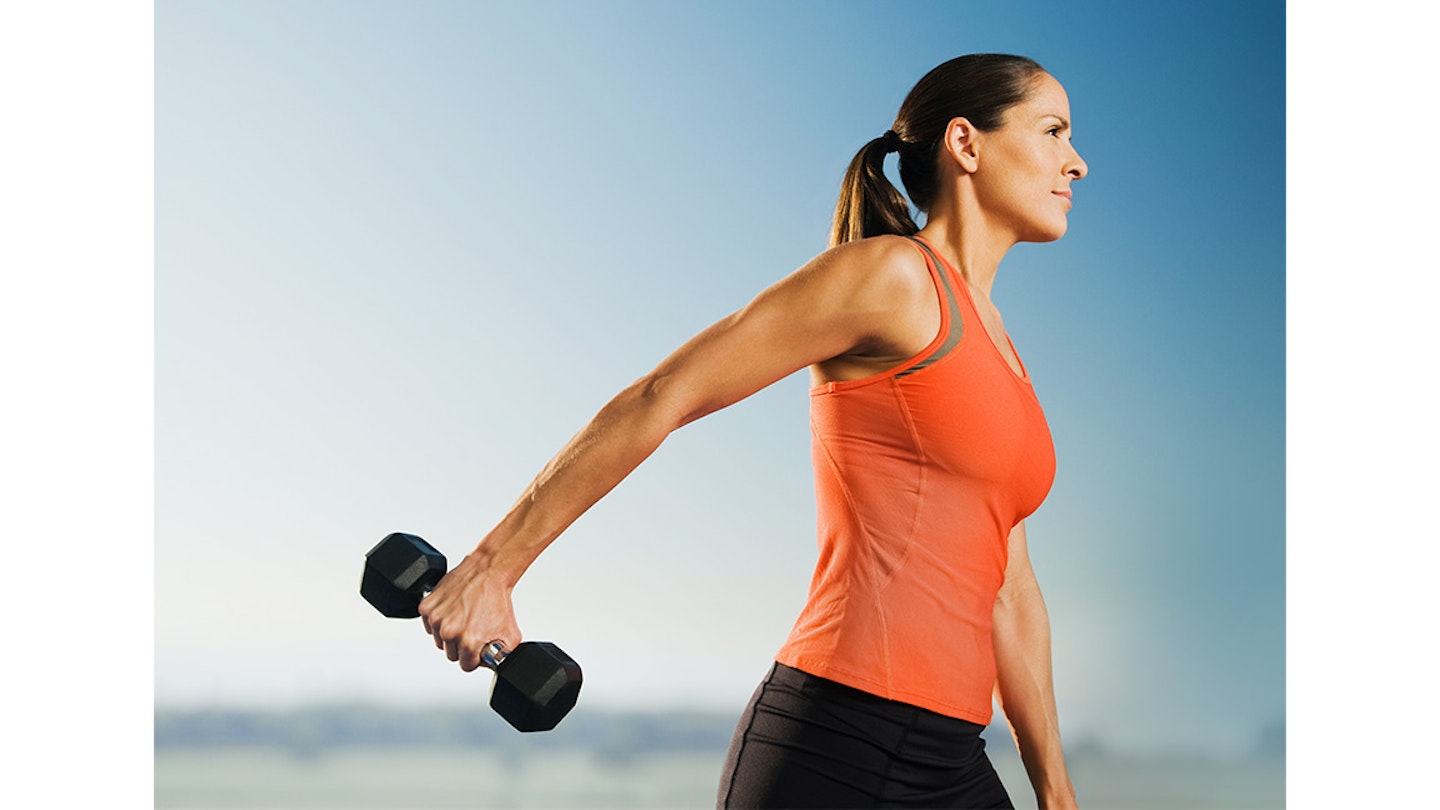
Perform the circuit below two or three times a week to boost your strength. If you’re struggling to fit it all in, make a mini circuit out of the first three exercises.
After 10min jogging or on a static bike to warm-up, run through the exercises below in order, spending 60sec on each, moving straight onto the next with no rest. Pause for 2min at the end, then repeat once or twice more. These interval times can be adjusted to your fitness and how much time you have available, so no excuses!
1. Dips

Sit on the edge of a bench or step with your hands by your sides and facing forwards. Bring your backside off the bench and support your weight on your hands and feet. The straighter your legs, the harder it is. Lower your body by bending your arms to 90 degrees.
Benefit: An old-school circuit classic for building arm and shoulder strength.
2. Side squat
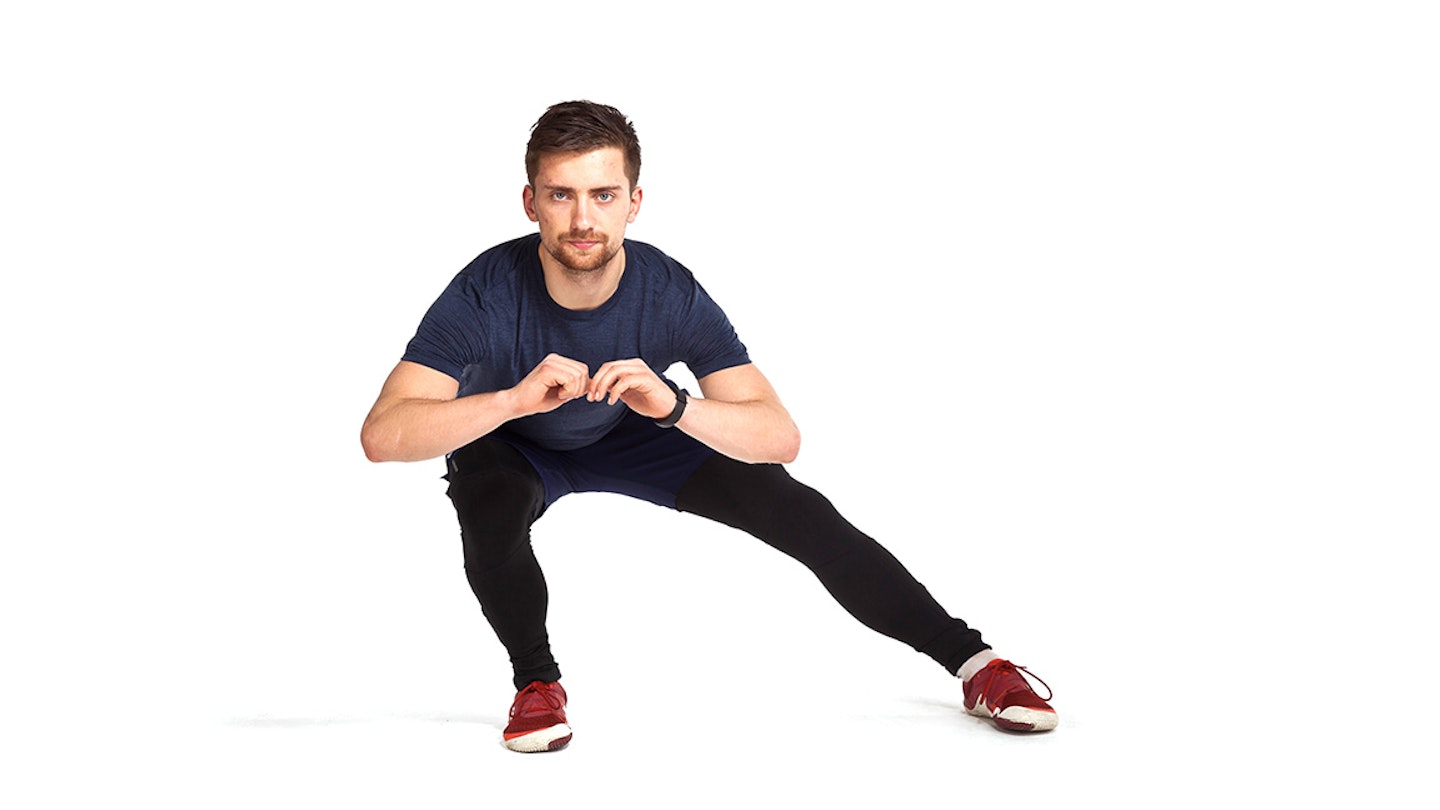
Adopt a wide standing stance. Keeping one leg straight, squat down by bending the other leg. Keep your head up and imagine you’re sitting back onto a chair. Alternate from side to side.
Benefit: Develops lateral strength and stability, which is often lacking in runners
3. Side plank
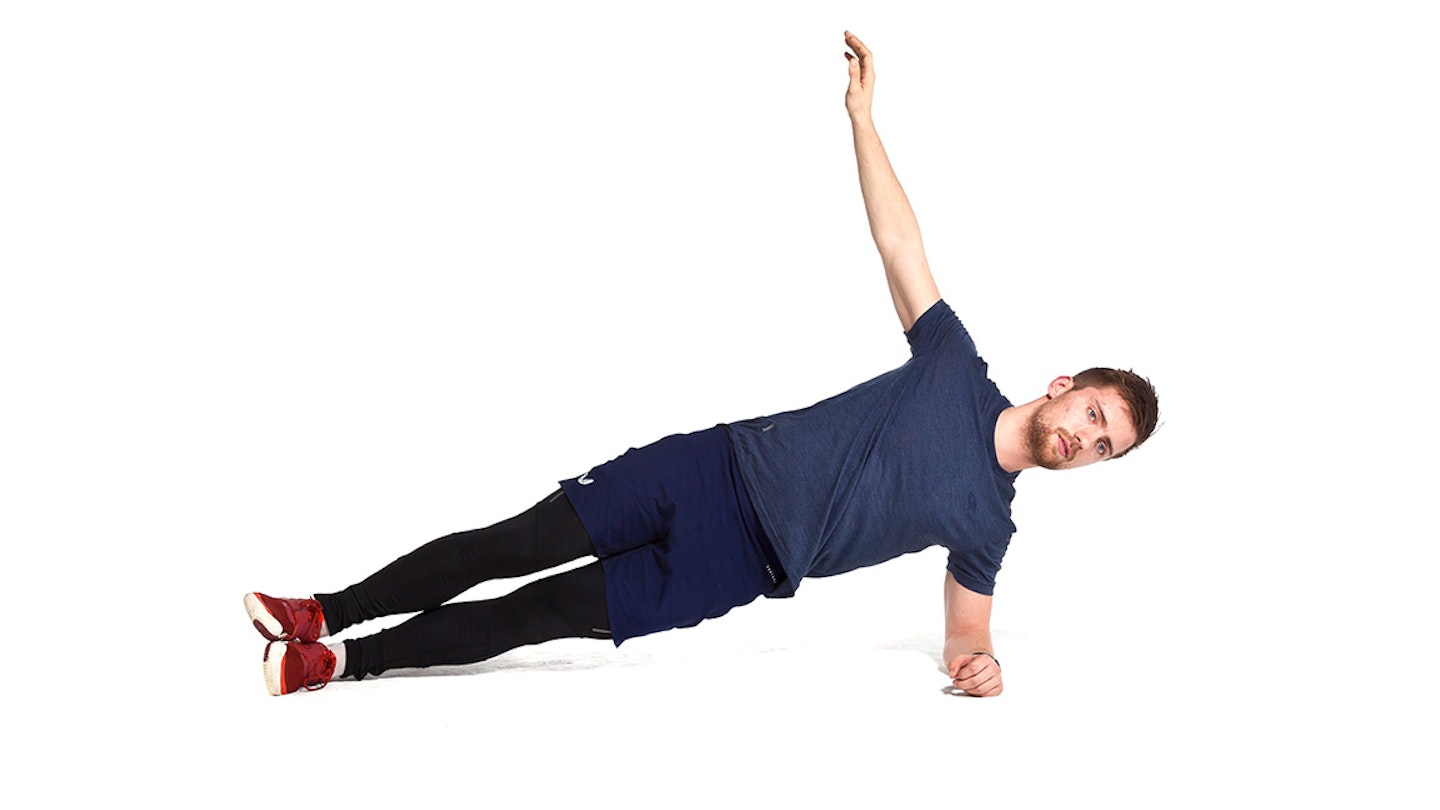
Lie on your side, stack your feet one on top of the other, lift your hips off the floor and support your weight on your elbow, forearm and outside of the bottom foot. Hold a strong position without sagging or unbalancing forwards or back.
Benefit: Works the obliques, which play a part in minimising inefficient body roll when running.
4. Step-ups
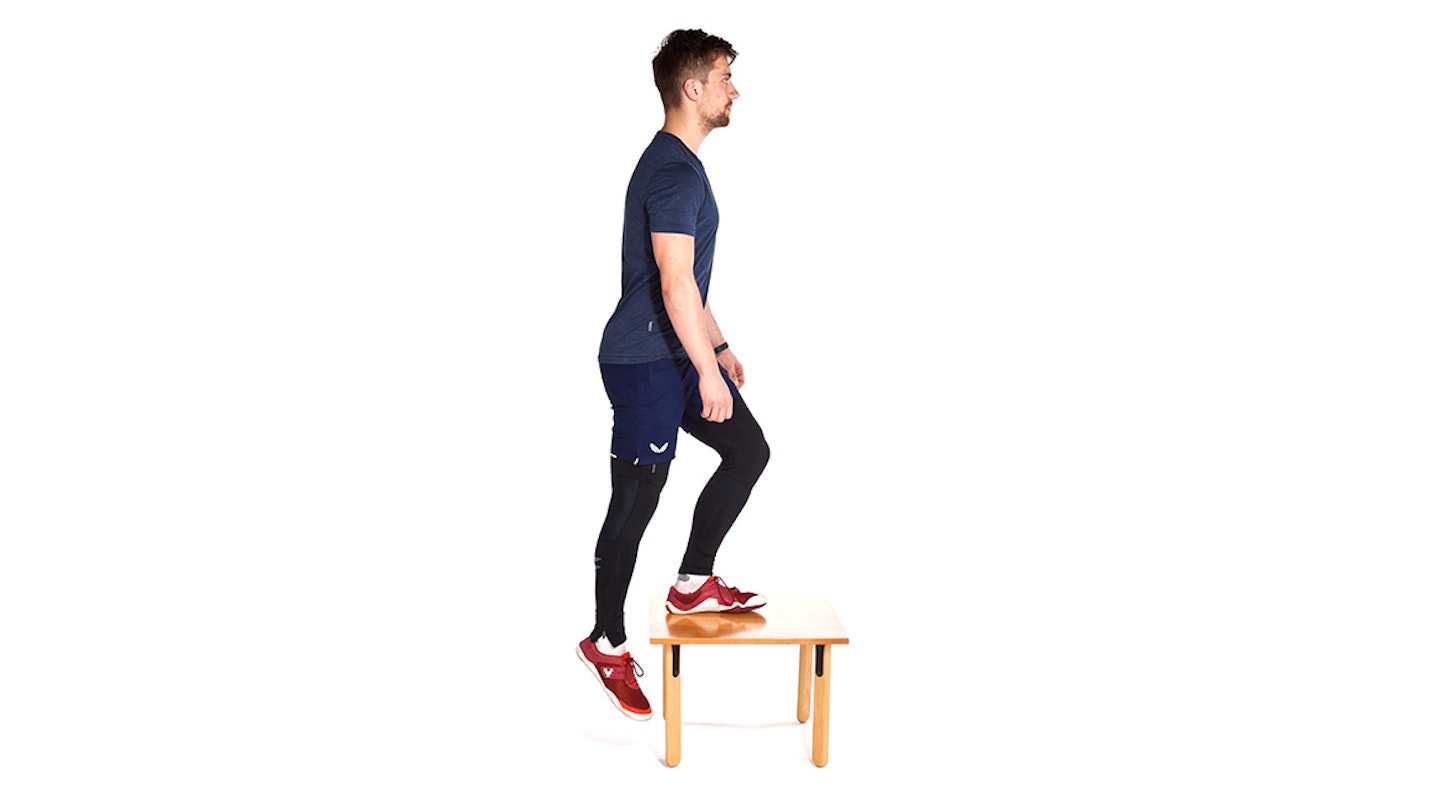
Find a bench or step of challenging height and step on to and off it, alternating your leading leg. Make sure you step fully up and stand tall before stepping back off.
Benefit: Develops hill-climbing specific strength, power and muscular endurance.
5. Curl to press

Using a pair of dumbbells or kettle bells, hold them at your sides. Keeping your elbows in, curl them smoothly to your shoulders. Rotate your hands so they’re facing forwards and press the weights over your head. Reverse the movement and repeat.
Benefit: Two upper-body exercises in one; hits your biceps and shoulders.
6. Press-up
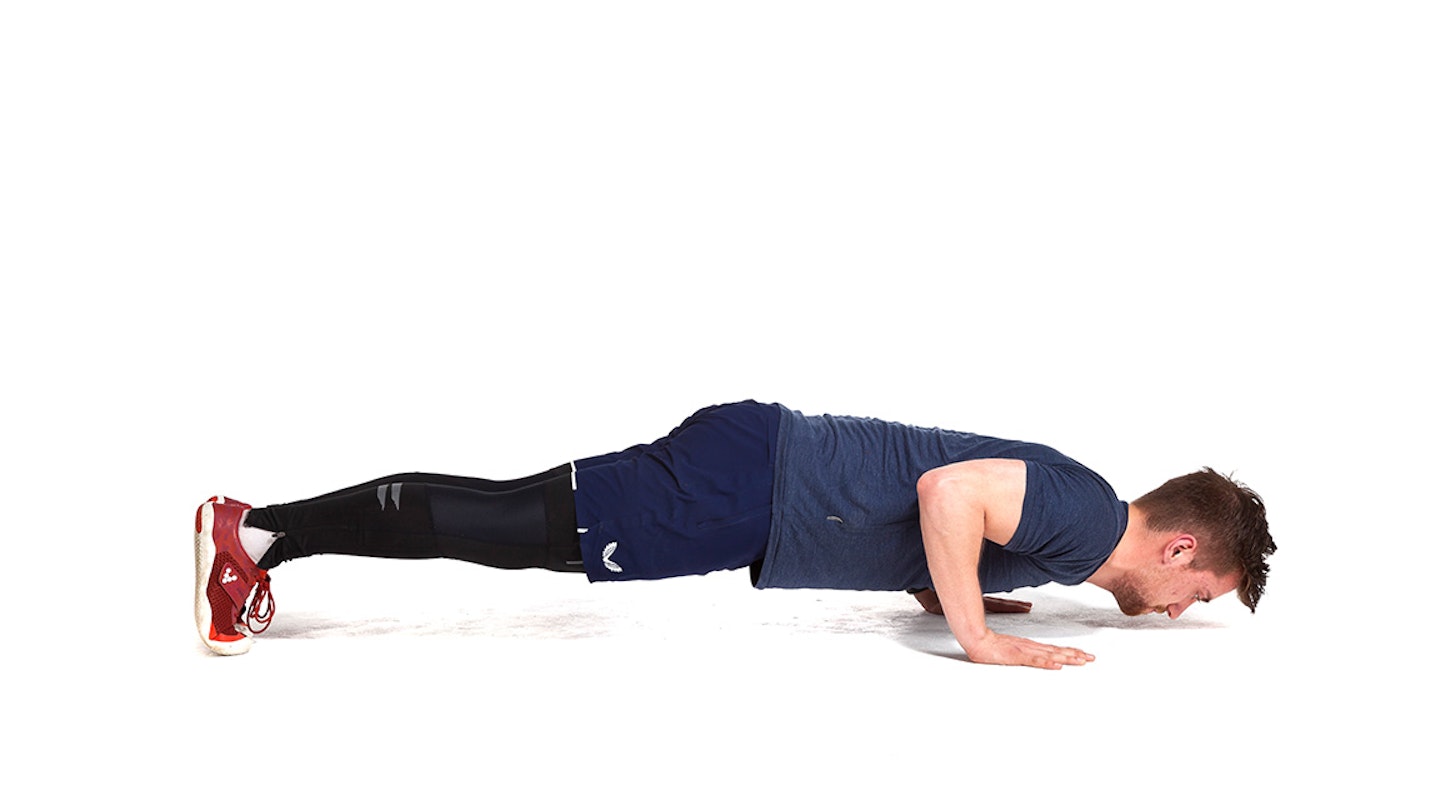
Have your hands shoulder-width apart and, keeping a straight line from your head to your heels, bend your arms to at least 90 degrees. If you struggle for form or depth, drop your knees to the floor.
Benefit: An all-time classic for building upper-body strength and functional trunk stability.
7. Plank
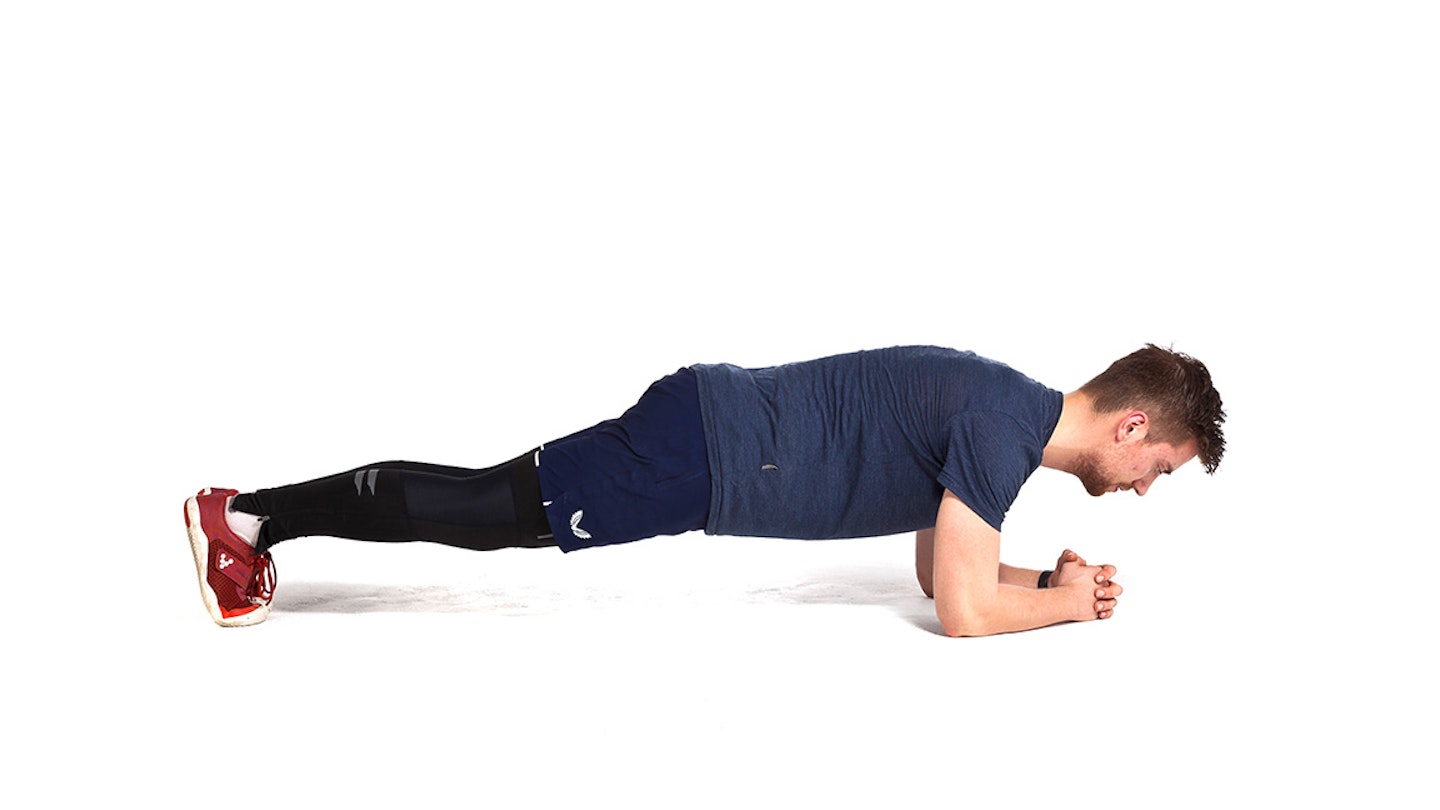
Adopt a press-up position but support your weight on elbows and forearms. Focus on keeping your whole body straight, like a plank, and engaging the muscles of your trunk.
Benefit: Best exercise for developing functional trunk stability and strength.
8. Mountain climber
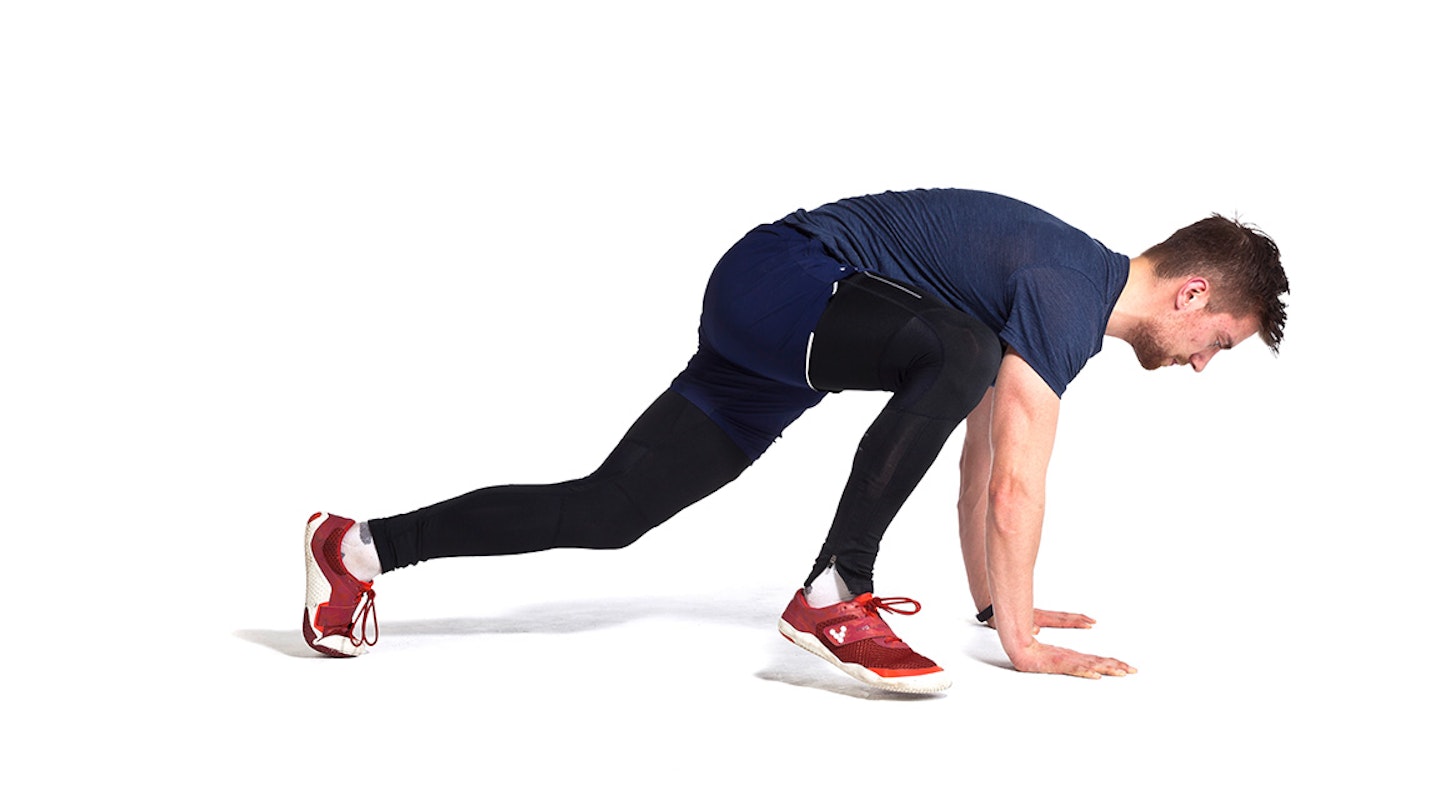
Adopt a press-up position and, keeping your hips down, drive one of your legs forward and, as that leg goes back, bring the other leg forwards. Keep the movement explosive and powerful, and minimise bouncing.
Benefit: Increased core stability, leg strength and power will get your heart and lungs working.
9. Walking lunges
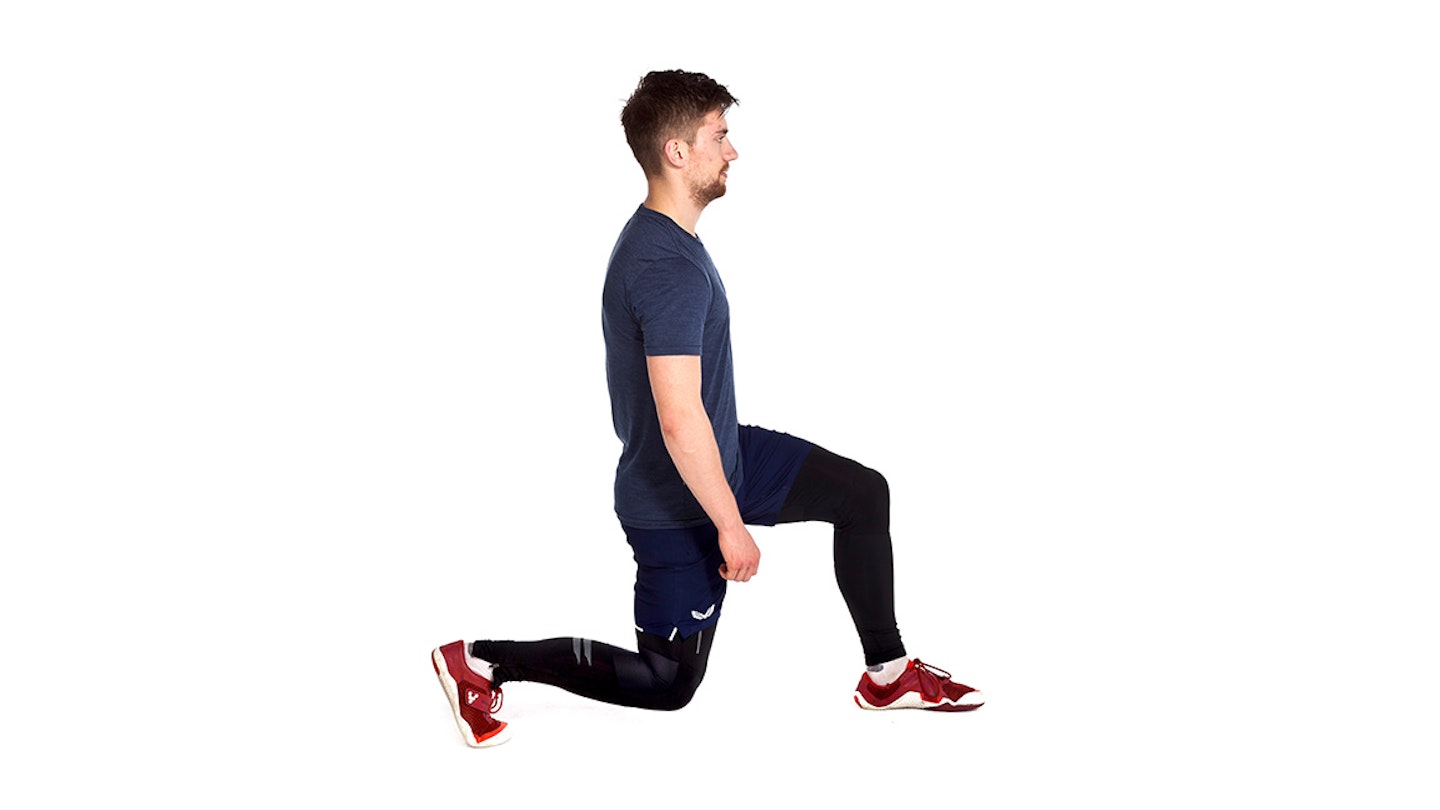
Standing with feet hip-width apart, take a step forward. Sink into a lunge, bending both legs to 90 degrees. Drive forwards and up, then into a lunge with the other leg.
Benefit: Great for quads, hamstrings, backside and balance.
10. Russian twist

With a weight on the floor next to you, sit down with your legs extended. Keeping your back straight, lean back until you feel your abs engage. Pick up the weight and twist from right to left, reaching as far behind you as possible while maintaining your form.
Benefit: Another move targeting those key obliques, but also dynamically hitting your entire trunk musculature.
11. Pull-ups

Using an overhead bar, adopt an overhand grip that’s wider than your shoulder width. From a static hang, pull your chest smoothly towards the bar. If you struggle, do negative reps, lowering yourself as slowly as possible.
Benefit: Really tough, but unbeatable for upper back and arm strength.
12. Bulgarian squats
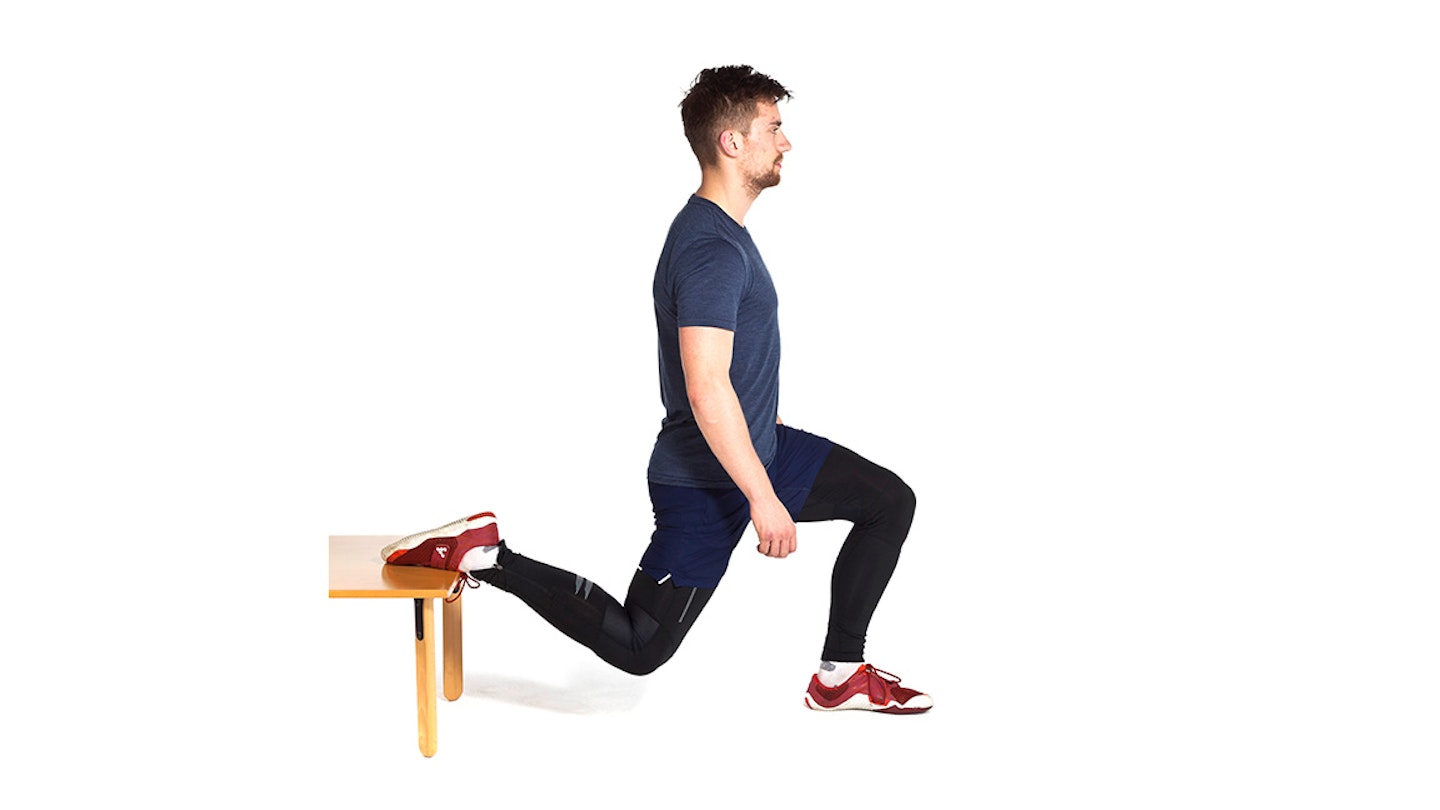
Stand with your calves touching a bench or step and take a step forward with one leg. Elevate the rear leg on the bench and, keeping your head up, bend your front leg until it’s at least parallel to the ground.
Benefit: Builds strength in legs, boosts balance, and is a great hip flexor stretch for the elevated rear leg.
Top image: Greg Rosenke / Unsplash
